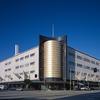More about Hollywood
- All
- Info
- Shop

Contributor
Ed Ruscha is a posterboy Angeleno.
His decision to move to LA as a young art student was somewhat contrarian. At the time of his arrival (the late 1950s), New York was the place to be for artists. But to him it seemed cold, expensive. Full of rats and piles of hot garbage, etc. He opted instead for the sunshine and palm trees of LA.
The edition of Hollywood silkscreen prints was done in 1968, back when LA wasn’t the chic art mecca that it is now. The Los Angeles that Ruscha first fell in love with was less gentrified, home to few artists and fewer juice bars. Its drab, rough edges and sometimes-seediness sprung a source of inspiration for Ruscha’s work, which looks past the city’s glitz and gets at the weirdness, isolation, and sterility that Southern California landscapes and icons can convey.
For Ruscha, the Hollywood sign served as "a smog indicator: if I could read it, the weather was OK." Hard to get a sunset like that without a little dose of pollution, though.
As a teenager in his home state of Oklahoma, Ruscha sometimes picked up gigs painting hand lettered signs. So it’s not surprising that words and typography are the main event in many of his paintings and prints.
Sources
- Hawthorne, Christopher. “What a Big Ed Ruscha Exhibition Misses About Southern California.” The Los Angeles Times. September 30, 2016. Accessed July 19, 2017. http://www.latimes.com/entertainment/arts/la-ca-cm-ed-ruscha-de-young-2…
- La Force, Thessaly. “As Los Angeles Changes, Ed Ruscha Stays the Same.” Artsy. July 16, 2016. Accessed July 19, 2017. https://www.artsy.net/article/artsy-editorial-ed-ruscha-on-60-years-in-…
- “Hollywood.” LACMA Collections. Accessed July 20, 2017. http://collections.lacma.org/node/246673













